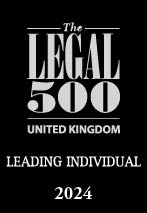Employee ownership is a useful exit strategy, as well as a good way to boost performance
If you run your own business, here’s a scenario that may sound familiar. Having built up their mapmaking business over several decades, our clients were seeking an exit. They wanted to both release capital and also secure their company’s future as an independent business. What could they do?
The solution they chose was employee ownership. An Employee Ownership Trust now owns 90% of the shares in the company, and the owners were able to retire without having to sell to a competitor.
In addition to succession planning, there are other good reasons to consider employee ownership:
To boost performance
Employee-owned businesses (EOBs) have higher levels of productivity than non-EOBs, and better retention and recruitment, according to research by the Employee Ownership Association.
Tax-efficiency
Owners who sell more than 50% of a company‘s shares to employees receive capital gains tax relief (as long as certain conditions are met) so they pay no tax on the sale. It’s also possible for staff to receive a tax-free annual bonus of up to £3,600.
Flexibility
It’s possible for owners to be able to make a partial or full exit, or phase their exit over time. All these benefits can be reaped across different sizes of business. While the most famous example of employee ownership in the UK is probably the huge John Lewis Partnership, we’ve seen it work well for a firm with nine employees, and for businesses ranging from IT specialists to giftware suppliers to architects.
As with most business decisions, employee ownership should not be seen as a quick fix. It’s a specialist area and planning should be done in the wider context of the commercial landscape, tax, employment law and raising finance.
If the business is family-owned, there may be relationship and succession issues as well. Lawyers and accountants who have expertise in this area can help you through those different issues, and also advise on the different types of employee ownership available.
“We wanted a succession solution which gave the company, the jobs and the brand a good chance of continued independent existence following our retirement; employee ownership ticked all our boxes.”
Susan Harvey, co-founder of Harvey Map Services
To return to the main contents of lindsays life issue 17, please click here.







